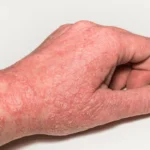What Is a Migraine and Why Does It Affect Some People More Than Others?
A migraine is more than just a headache—it’s a complex neurological condition that can significantly disrupt daily life. Characterized by intense, often throbbing pain, migraines are frequently accompanied by other symptoms like nausea, sensitivity to light, and visual disturbances. Let’s delve into what migraines are and why they impact certain individuals more than others.
Table of Contents
ToggleWhat Is a Migraine?
A migraine is a recurring headache disorder that typically involves moderate to severe pain on one side of the head. It is often accompanied by other symptoms that vary from person to person. Migraines can last anywhere from a few hours to several days and may interfere with work, social activities, and overall quality of life.
Types of Migraines:
Migraine with Aura: Involves warning signs like visual disturbances or tingling sensations before the headache starts.
Migraine without Aura: The most common type, without any pre-headache warning signs.
Chronic Migraine: Occurs 15 or more days per month for at least three months.
Hemiplegic Migraine: A rare type that causes temporary weakness on one side of the body.
Vestibular Migraine: Causes dizziness, balance issues, and vertigo in addition to headache pain.
Symptoms of Migraines
Migraines usually progress through four stages, though not everyone experiences all of them:
Prodrome: Subtle signs that appear 1-2 days before a migraine, such as mood changes, food cravings, or fatigue.
Aura (in some cases): Visual or sensory disturbances, like flashing lights, blind spots, or numbness.
Attack: Intense headache pain, often accompanied by nausea, vomiting, or sensitivity to light and sound.
Postdrome: Aftereffects, including exhaustion, confusion, or a “hangover” feeling.
Why Do Some People Experience Migraines?
Migraines are influenced by a combination of genetic, biological, and environmental factors. Here are some reasons why certain people are more susceptible:
1. Genetic Factors
Family History: Migraines often run in families, suggesting a genetic predisposition.
Specific Gene Mutations: Studies have linked certain genes to a higher risk of developing migraines.
2. Neurological Sensitivity
People with migraines often have a more sensitive nervous system that overreacts to triggers.
Changes in brain activity and blood flow during a migraine attack may explain the symptoms.
3. Hormonal Fluctuations
Hormonal changes, particularly in women, play a significant role.
Migraines are more common during menstrual periods, pregnancy, or menopause.
4. Environmental and Lifestyle Triggers
Stress: A common trigger that can precipitate or worsen migraines.
Dietary Factors: Foods like chocolate, aged cheese, or alcohol may trigger attacks.
Sleep Patterns: Both oversleeping and lack of sleep can provoke migraines.
Weather Changes: Sudden changes in temperature, humidity, or barometric pressure.
Diagnosing Migraines
A proper diagnosis is essential for effective treatment. Healthcare providers may:
Review Medical History: Discuss symptoms, frequency, and triggers.
Conduct Physical and Neurological Exams: Rule out other conditions.
Recommend Imaging Tests: Such as MRIs or CT scans, if needed.
How to Manage and Treat Migraines
While migraines cannot be cured, they can be managed through a combination of medication, lifestyle changes, and preventive strategies:
1. Medications
Pain Relievers: Over-the-counter or prescription options like NSAIDs or triptans.
Preventive Medications: Beta-blockers, anticonvulsants, or antidepressants to reduce frequency.
CGRP Inhibitors: Newer medications that block a protein involved in migraine attacks.
2. Lifestyle Modifications
Maintain a consistent sleep schedule.
Eat balanced meals and stay hydrated.
Manage stress through relaxation techniques like meditation or yoga.
3. Identify and Avoid Triggers
Keep a migraine diary to track potential triggers.
Avoid foods, activities, or environments that seem to precede attacks.
4. Advanced Treatments
Botox Injections: Approved for chronic migraines to reduce severity and frequency.
Nerve Stimulation Devices: Use electrical impulses to prevent or relieve symptoms.
Preventing Migraines
Prevention is key to reducing the frequency and intensity of migraines:
Adopt a regular routine for meals, sleep, and exercise.
Manage stress through healthy outlets like hobbies or physical activity.
Take prescribed preventive medications if advised by a healthcare provider.
When to Seek Professional Help
If migraines significantly impact your daily life or become more severe over time, consult a healthcare provider. Seek immediate medical attention if you experience:
Sudden, severe headaches unlike any you’ve had before.
Neurological symptoms like confusion, weakness, or vision changes.
Frequent migraines that do not respond to over-the-counter medications.
Conclusion
Migraines are a complex and often debilitating condition, but understanding their causes and triggers can empower individuals to manage them effectively. By combining medical treatments with lifestyle changes, many people can reduce the impact of migraines on their lives. If you struggle with migraines, don’t hesitate to seek professional guidance for a personalized treatment plan.



